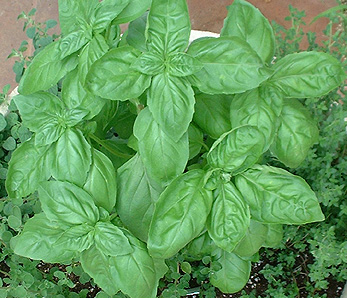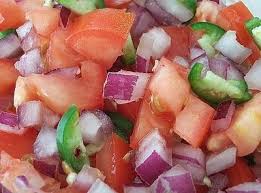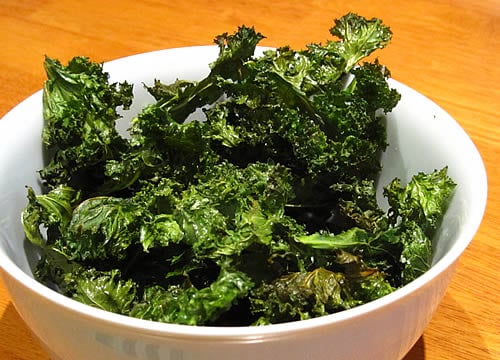The farm is winding down in a sense but that's due to fact that its staying colder more often and the harvest season is just about over. Due to a number of factors, there isn't any pictures, but there is something that should be shared. Its a short video created in September 2011 about the campus farm titled '
Also see the campus farm's facebook page, and posts about us on the SMCM admissions tumblr here and here. Also we had an old blog on blogger as well. That's all.
Sunday, November 17, 2013
Sunday, November 10, 2013
The farm four days ago...
I've been busy with stuff but now I get to post pictures of time at the farm on Thursday before sunset. Enjoy!
And this one later in the day of the sunset looking over the pond for funzies:
Friday, November 1, 2013
The farm before the rain
No one from SEAC was at the farm yesterday, but here's some pics of the farm on Thursday when some onions were planted. Those animals eating the veggies can be kept away (hopefully)!
Wednesday, July 3, 2013
Kale Chips!
For all you Martha haters out there, you should still check out this website and figure out how to make kale chips! The perfect, healthy, vitamin-packed snack. Crisp, salty, and delicioso! Martha even gives you five quick and easy alternative flavors to plain old salt.
Now, if you've always wanted to grow your own kale, or have wondered how we grow it at the farm...well, it's easy. Kale is part of the cabbage family, and it is a very resilient leafy green that can withstand cold weather, can be grown through most seasons, and resists many diseases. Hot weather and cabbageworms are its enemies. Gentle World provides a good overview about how to grow kale in pots and in the garden. When harvesting, snip the leaves from the outside rather than plucking.
Tuesday, July 2, 2013
PRESTO! Basil to Pesto.

Basil is a very important herb in cooking, but fortunately for everyone, basil is super easy to grow! You can even grow it all year long as long as you keep it in a sunny, warm spot indoors or outdoors. If you grow it outdoors, make sure that the basil gets enough water. If you grow it indoors, make sure that the basil is getting at least six hours of sunlight.
You can start basil from seed after the last frost of the season, or you can buy a seedling from Home Depot if you aren't into starting from seed. Maintain your basil plant by plucking off the larger leaves so fuller and stronger leaves can grow in their stead. Make sure that flowers do not grow on your basil plant- if they start to bud, pick off the flower and the surrounding leaves.
And that's it! Caring for basil is super easy and super rewarding. Having fresh caprese (fresh basil, fresh tomato and fresh mozzarella) sandwiches is THE BEST! If you have more basil than you know what to do with, dry it out to have some dried basil on hand, or freeze it, or make some pesto! Here's an excellent, blogger-tested pesto recipe. It takes five seconds to make and it's yummers. Enjoy! P.S. we have basil at the Campus Farm :)
Sunday, June 9, 2013
El Tomate = Salsa
This week's post is going to be very lazy, and about something super delicious. One of the greatest crops to plant in your summer garden is tomatoes because 1) they are delicious, 2) they're so useful in the kitchen, and 3) they're low-maintenance.

The hard part about planting tomatoes is deciding which type of tomato you want. There are several varieties that serve different purposes. You may want cherry tomatoes for simple snacking and salad-making, slicing tomatoes for your hamburgers, or perhaps you are in need of cooking tomatoes because you are obsessed with Italian food and need ridiculous amounts of red pasta sauce. Don't be afraid to try out different tomato varieties!
When deciding upon a tomato to plant, remember that tomatoes are vines and need some type of support to help them grow upwards. Some tomato varieties are indeterminate type tomatoes (meaning they have a longer period of time in which they produce fruit, and they grow taller)- they will need to be planted next to stakes and trained to wind around the stalk. Other tomato varieties are determinate type tomatoes (shorter fruit producing time period, can be grown with a stake or a tomato cage).
This link and this link will give you easy steps about how to grow the best tomatoes in town. Just in case you get too antsy, just remember to plant your tomatoes in a sunny space and don't over water (once every 5 days at the most). When picking transplants, don't buy overgrown plants because they will have poorer root systems and will take longer to give you produce. (P.S. if you want summer fruit, it's probably too late to start from seed. Typically, one would start seedlings in a greenhouse around March)
NOW. If you have a crap ton of tomatoes, or you just love salsa, try out this recipe!

Ingredients:
4 C. chopped tomatoes (drained in streamer)
1/2 red onion, chopped
1 lime, juiced (if you roll it on the counter before you cut it, it helps get the juice out)
some fresh cilantro, chopped
1 jalapeno pepper, finely chopped (for peppers, set aside seeds, then add as many as needed for desired hotness)
1 serrano pepper, finely chopped

The hard part about planting tomatoes is deciding which type of tomato you want. There are several varieties that serve different purposes. You may want cherry tomatoes for simple snacking and salad-making, slicing tomatoes for your hamburgers, or perhaps you are in need of cooking tomatoes because you are obsessed with Italian food and need ridiculous amounts of red pasta sauce. Don't be afraid to try out different tomato varieties!
When deciding upon a tomato to plant, remember that tomatoes are vines and need some type of support to help them grow upwards. Some tomato varieties are indeterminate type tomatoes (meaning they have a longer period of time in which they produce fruit, and they grow taller)- they will need to be planted next to stakes and trained to wind around the stalk. Other tomato varieties are determinate type tomatoes (shorter fruit producing time period, can be grown with a stake or a tomato cage).
| staking method |
| caging method |
NOW. If you have a crap ton of tomatoes, or you just love salsa, try out this recipe!
Ingredients:
4 C. chopped tomatoes (drained in streamer)
1/2 red onion, chopped
1 lime, juiced (if you roll it on the counter before you cut it, it helps get the juice out)
some fresh cilantro, chopped
1 jalapeno pepper, finely chopped (for peppers, set aside seeds, then add as many as needed for desired hotness)
1 serrano pepper, finely chopped
Sunday, June 2, 2013
Making Black Gold: On Composting
For those of you who have not had the pleasure of hanging out with Professor Kate Chandler, she calls dirt "black gold". She also gets very excited about the prospect of making compost. Everyone should take some inspiration from our dear English professor because we're losing valuable fertile soil at a ridiculous rate due to overuse of soil, lack of biodiversity, erosion, compaction, imbalances in organic matter, etc., thus making soil a very valuable resource. We can help to decrease the rate of our losses by helping the Earth to regain a little soil health. Composting is a solution- can you see why Kate is so excited about it?
| lasagna garden- plant right into the compost! |
| compost tumbler |
| open-air compost bin |
| hot compost bin |
To save space, posted below will be some links where you can find out more about composting. If you're too lazy to do all this reading, you could swing by the farm and ask any of the farm managers or Kate about how to compost because we partake in all of these composting methods at the farm. Just so ya know, we at the farm utilize all of our resources to make our compost and upkeep our school's sustainable agenda- food scraps from Bon App, coffee grinds from the Grind, leaves from Kate's backyard, weeds and old plants from the farm, and manual labor. It's a real community effort. So, next time you grab a coffee from the Grind or eat a cantaloupe from the Great Room- just remember that the scraps are eventually going to be dirt.
Helpful site describing the different kinds of composting: http://www.oregonmetro.gov/index.cfm/go/by.web/id=16264
How to make a lasagna garden: http://organicgardening.about.com/od/startinganorganicgarden/a/lasagnagarden.htm
An excellent compost bucket you can use in your kitchen to collect food scraps- $20 at Bed, Bath and Beyond (tested by blogger): https://www.google.com/search?q=oxo+compost+bucket&oq=oxo+compo&aqs=chrome.3.57j0l3.2912j0&sourceid=chrome&ie=UTF-8
Compostable Materials
Courtesty of http://www.composterconnection.com/what-to-use.html
Include• Leaves
• Grass clippings
• Brush trimmings
• Manure (preferably organic)
• Any non-animal food scraps: fruits, vegetables, peelings, bread, cereal, coffee grounds and filters, tea leaves and tea bags (preferably minus the staples)
• Old wine
• Pet bedding from herbivores ONLY -- rabbits, hamsters, etc.
• Dry cat or dog food
• Dust from sweeping and vacuuming
• Dryer lint
• Old herbs and spices
Need Prep or Special Time
All of these items can be added to compost, but if you just toss them into a normal heap, they may still be there, virtually unchanged, a season or two later. Be prepared.
• Shredded newspaper, receipts, paper bags, etc (any non-glossy paper)
• Tissues, paper toweling, and cotton balls -- unless soaked with bacon fat, kerosene, makeup, or other stuff that doesn't belong in the pile!
• Cardboard, egg cartons, toilet rolls
• Used clothes, towels, and sheets made from natural fabrics -- cotton, linen, silk, wool, bamboo
• Old string & twine made of natural fabrics
• Pine needles
• Pine cones
• Saw dust
• Wood chips
• Nut shells
• Twigs
• Hair, human or otherwise
• Old, dry pasta
• Nut shells
• Corn cobs
• Pits from mangos, avocados, peaches, plums, etc.
• Toothpicks, wine corks
Avoid
• Raspberry & blackberry brambles
• Long twigs or big branches
Real No-Nos
• Pet droppings, especially dogs & cats
• Animal products -- meat, bones, butter, milk, fish skins
Tuesday, May 28, 2013
WE'RE ALIVE
So, the SMCM Campus Community Farm Blog has taken a vacation through the internet and has decided to come back and thrive as well as the plants it writes about. GET EXCITED! A blog revival during summer may seem a little bit weird, but the Campus Farm managers want to keep everyone excited and thinking about gardening even while everyone is at home. We're going to post weekly tips about what is going on at the SMCM farm and on farms everywhere, or what you could be doing at your own home, etc. It's gonna be great. So, if you love getting your hands dirty or are tired of paying for vegetables, READ ON! Or, if you want to share your knowledge about gardening, then please email us at smcmcampusfarm@gmail.com, and we will happily post your input!
First post. Monsanto Rally that happened on Saturday, May 25. Many probably already know about it, but it's important to really think about, especially in relation to the goals of the farm at St. Mary's (let's talk about a little of that first). The farm at St. Mary's is aiming to gain the label of "organic", meaning that we do not use chemicals, such as pesticides and herbicides, in the growing of our foods. The founders of the farm rented a plot of land from Historic St. Mary's, and is located right next to a larger production farm. In order to attain our status of "organic", we have built a buffer zone between our land and the other farm (where chemicals are used), and have refrained from using chemicals. Why the founders chose "organic" I cannot state with confidence, but personally, I find the choice to be wonderful; why harm the Earth when I would not harm myself? Why hurt myself by consuming that which is harmful to other living beings?
Back to Monsanto. They produce genetically-modified food products. There are great arguments for GMOs- Monsanto creates seeds that are supposed to increase food production in order to help fight the world's hunger, and creates plants that are resistant to disease or take less energy to produce. However, there are other ethical issues with production: not labeling (e.g. this can be tricky when talking about whether or not a food is kosher) "playing God", unintentionally having seeds blow over into non-GMO farms, etc. (sorry it's passed my bedtime so I will offer no more reasons, but you get the idea). Hundreds of people rallied on Saturday because they are conscious about how food is made and how changes in food production are altering our way of life, our health, our sense of community, etc.
One of my really good friends pointed out, in better words, that our greatest connection with the Earth is through the food we take from it and eat. So, take care to think long and hard about where your food is coming from, how it is getting to you, and what exactly it is that you are eating. And come volunteer at SMCM farm to get involved in the making of the things you stuff in your face! We sell our produce to Bon App. :) Feel free to leave comments about your take on the Monsanto Rally or the ethics of GMOs, whether pro or opposed.
First post. Monsanto Rally that happened on Saturday, May 25. Many probably already know about it, but it's important to really think about, especially in relation to the goals of the farm at St. Mary's (let's talk about a little of that first). The farm at St. Mary's is aiming to gain the label of "organic", meaning that we do not use chemicals, such as pesticides and herbicides, in the growing of our foods. The founders of the farm rented a plot of land from Historic St. Mary's, and is located right next to a larger production farm. In order to attain our status of "organic", we have built a buffer zone between our land and the other farm (where chemicals are used), and have refrained from using chemicals. Why the founders chose "organic" I cannot state with confidence, but personally, I find the choice to be wonderful; why harm the Earth when I would not harm myself? Why hurt myself by consuming that which is harmful to other living beings?
Back to Monsanto. They produce genetically-modified food products. There are great arguments for GMOs- Monsanto creates seeds that are supposed to increase food production in order to help fight the world's hunger, and creates plants that are resistant to disease or take less energy to produce. However, there are other ethical issues with production: not labeling (e.g. this can be tricky when talking about whether or not a food is kosher) "playing God", unintentionally having seeds blow over into non-GMO farms, etc. (sorry it's passed my bedtime so I will offer no more reasons, but you get the idea). Hundreds of people rallied on Saturday because they are conscious about how food is made and how changes in food production are altering our way of life, our health, our sense of community, etc.
One of my really good friends pointed out, in better words, that our greatest connection with the Earth is through the food we take from it and eat. So, take care to think long and hard about where your food is coming from, how it is getting to you, and what exactly it is that you are eating. And come volunteer at SMCM farm to get involved in the making of the things you stuff in your face! We sell our produce to Bon App. :) Feel free to leave comments about your take on the Monsanto Rally or the ethics of GMOs, whether pro or opposed.
Subscribe to:
Posts (Atom)
















